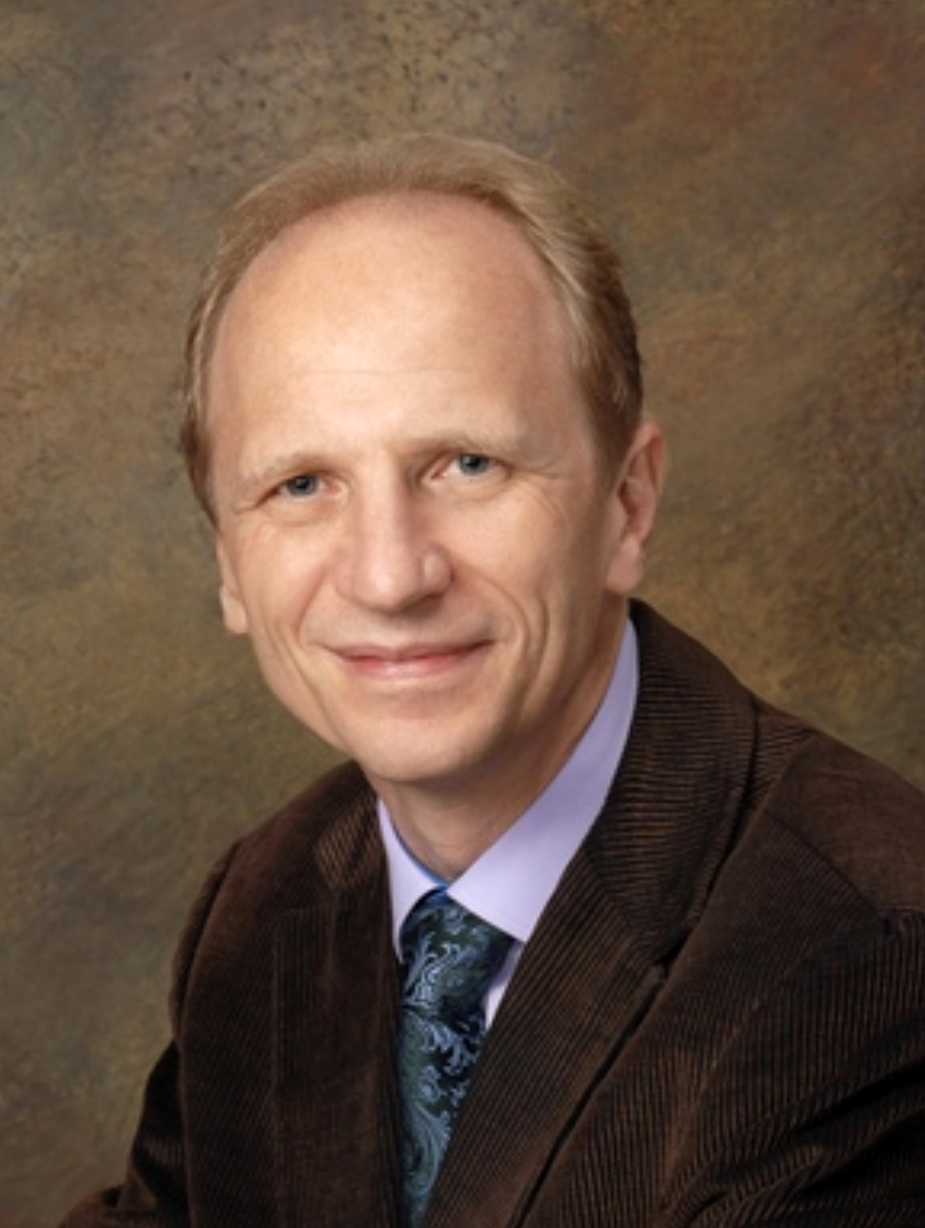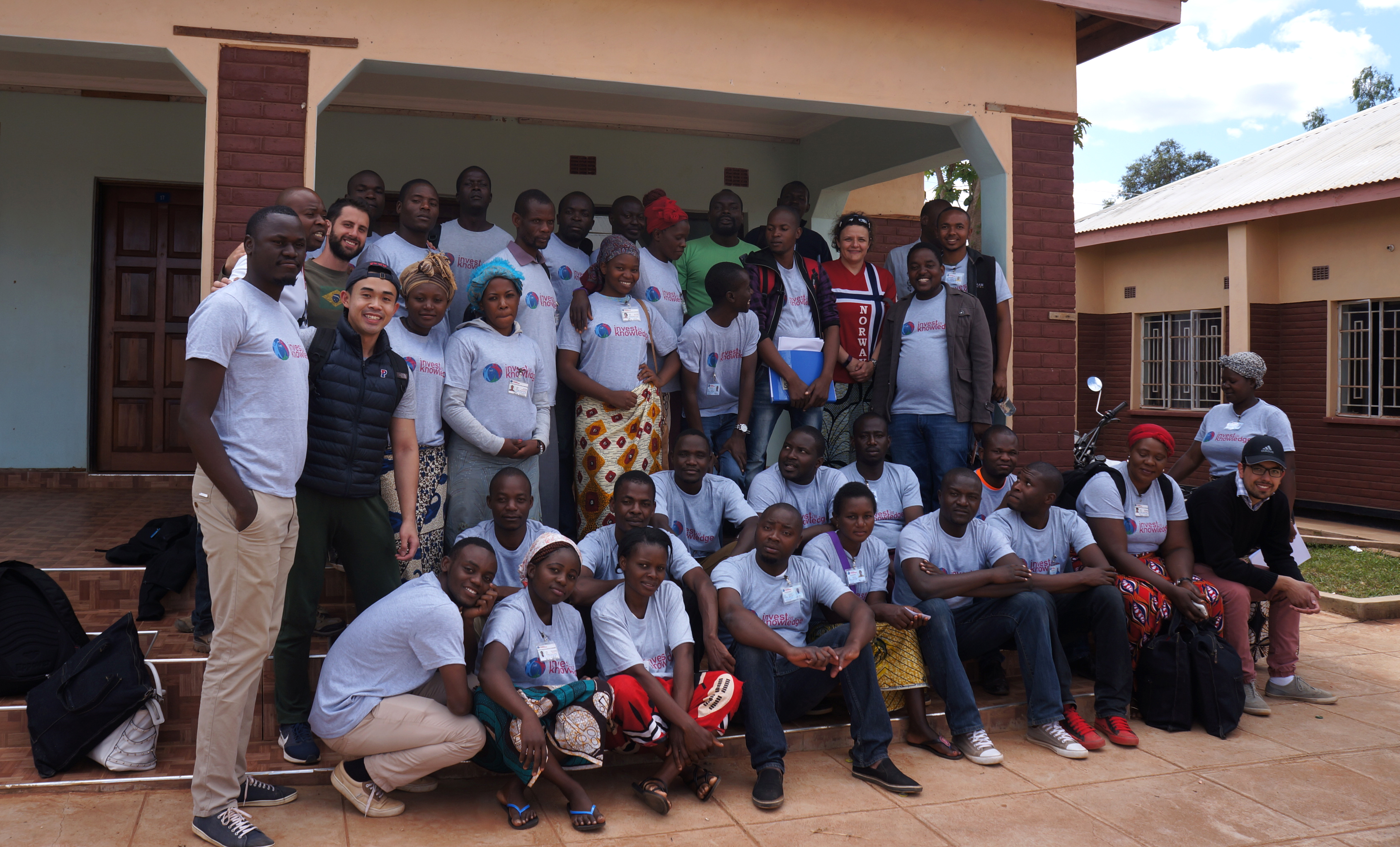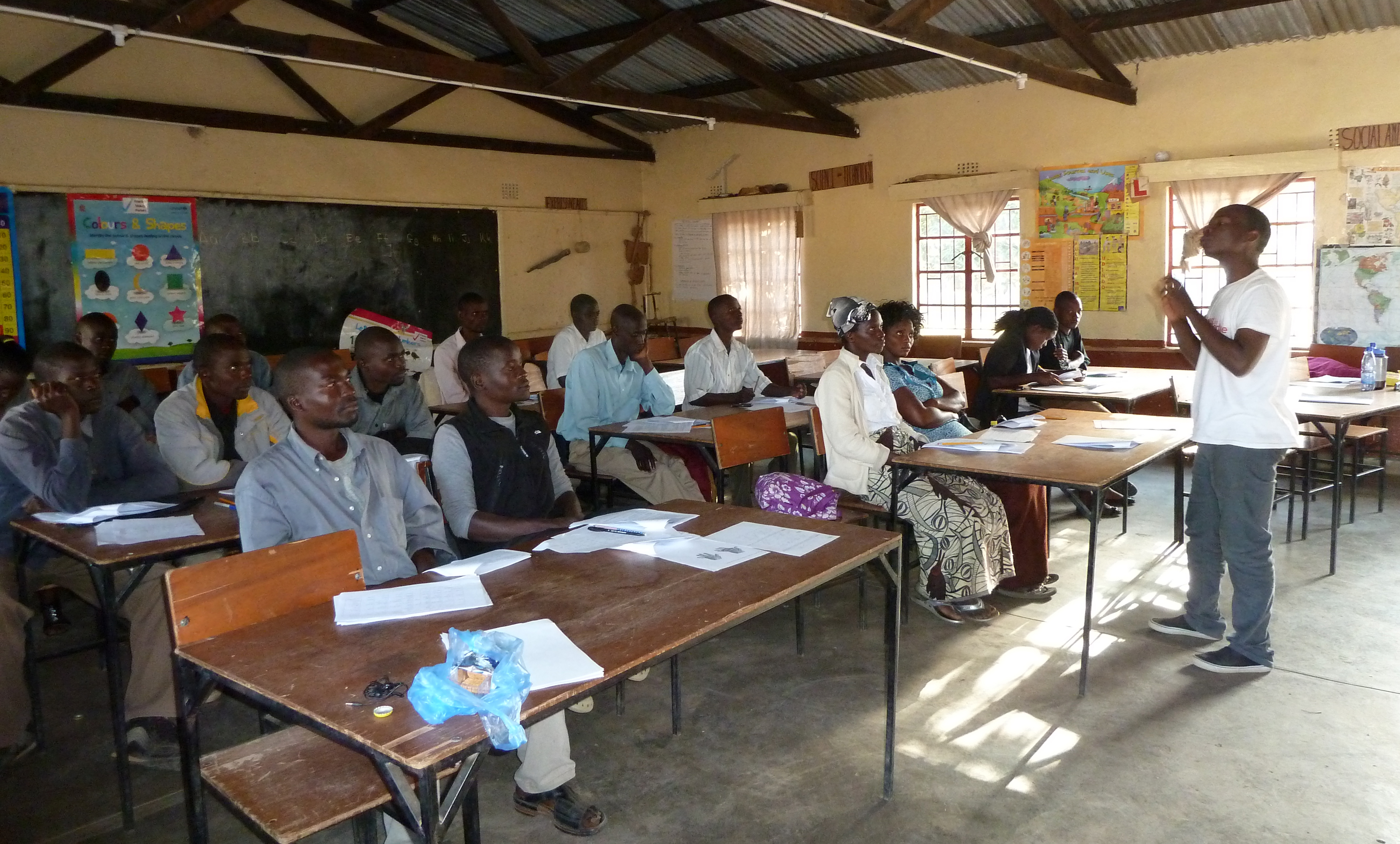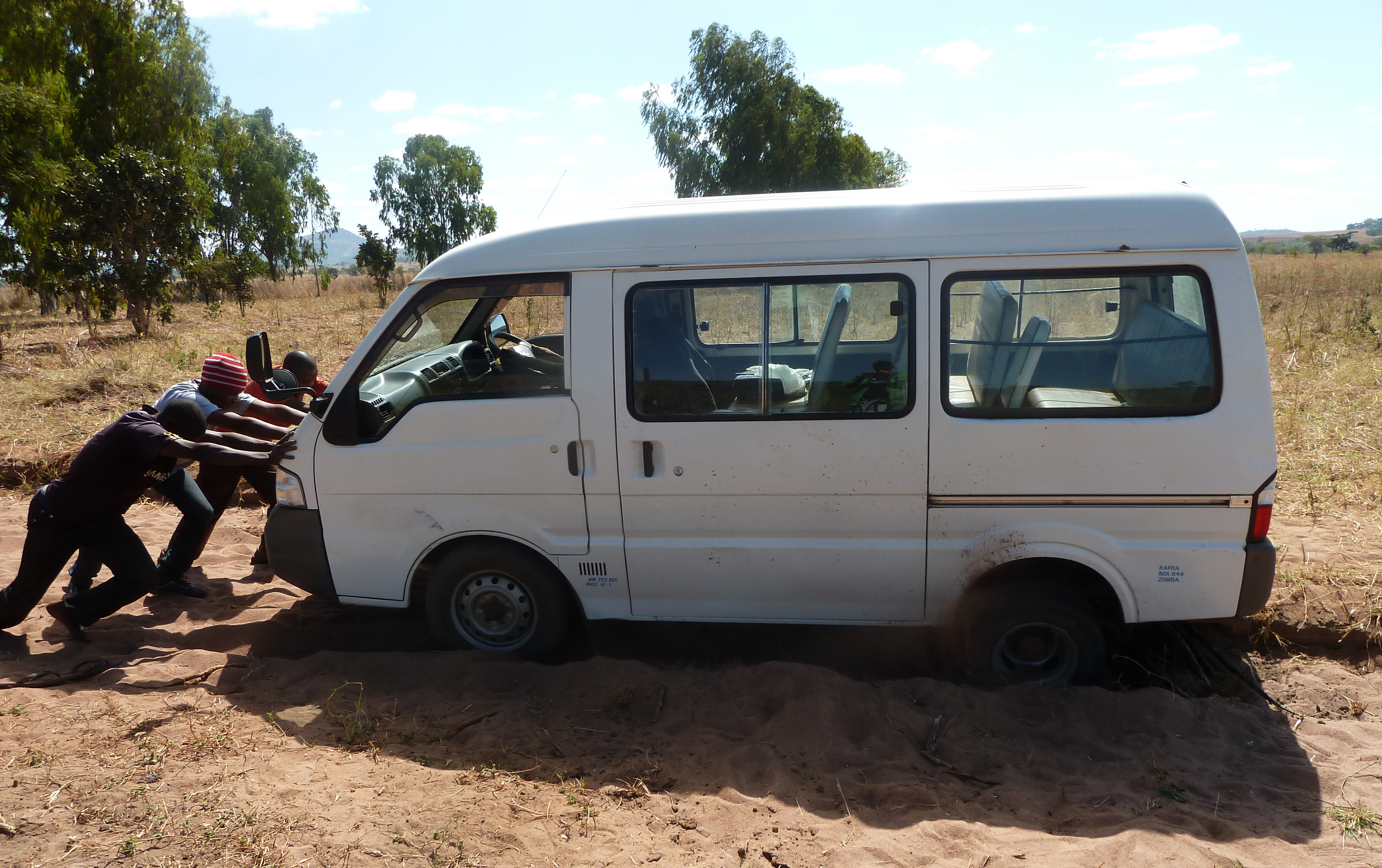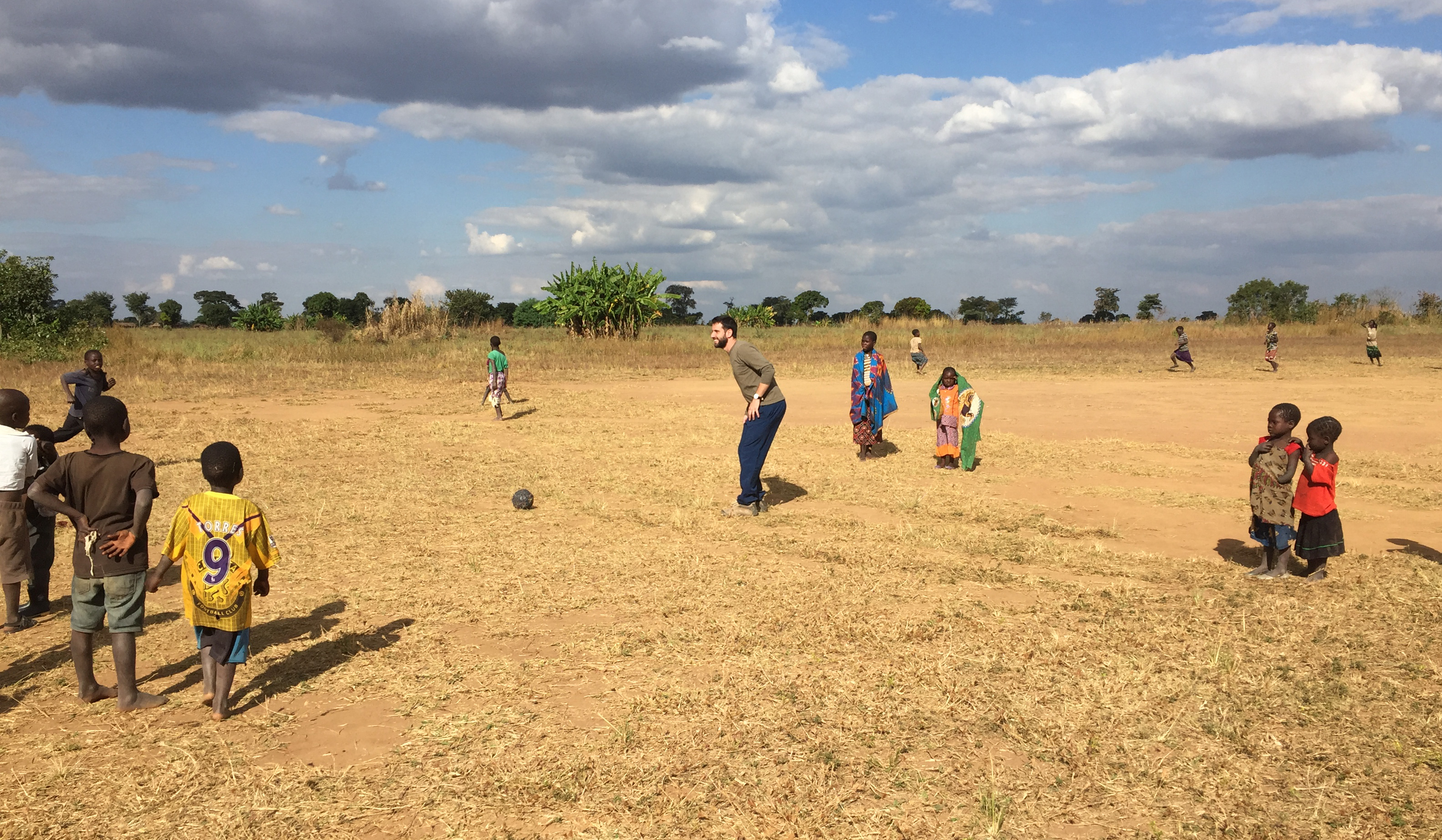Surviving an Epidemic: Charting Trends and Resilience in Sub-Saharan Africa
Hans-Peter Kohler, Frederick J. Warren Professor of Demography, helms groundbreaking longitudinal study on demographic change, health, and defying adversity in poor rural communities.
For Hans-Peter Kohler, research isn’t only about numbers—it’s about context and community, about individuals and their social networks, and about understanding the contingencies of human lives as they unfold in times filled with major challenges and novel opportunities. Kohler is the Principal Investigator for the Malawi Longitudinal Study of Families and Health (MLSFH), one of very few long-standing publicly-available longitudinal cohort studies in sub-Saharan Africa. Using recurring, extensive survey data collected in Malawi over two decades, Kohler and his team are able to explore respondents’ earlier-life decisions, access to information, perceptions of their own and others’ health, along with dozens of other factors. These data allow insight into pressing social, epidemiological, and demographic questions: how members of the community—individually and collectively—cope with shocks such as disease and famine, how families and communities build resilience, how potentially small differences between individuals and families amplify during periods of stress, and how innovations and interventions can help overcome adversity.
Most long-term cohort studies that are used to study changes in human behaviors, health, and social and demographic statuses have been conducted in higher-income, stable socioeconomic contexts. Populations like those who Malawi—where, Kohler says, “nobody could escape an AIDS epidemic that had devastating health and social implications in a region also dealing with poverty, famines, and basic uncertainties of life”—have been understudied. Life-course research thus has much to gain from studying the MLSFH cohort that did not enjoy such stability. “We have a rare opportunity to study individuals who often had life-long exposures to hardship,” Kohler continues, “which offers social scientists a unique window into how social, economic and epidemiological changes shape the human experience in low-income populations.”
When he first got involved in the project, Kohler was a recent graduate from the University of California at Berkeley in the late 1990s. Susan Watkins, then a professor of sociology at Penn (now a Professor Emerita), had an interest in social networks, risk behaviors, and fertility decline in high-risk HIV populations, and she was establishing the survey that became the MLSFH. She then invited Kohler and Jere Behrman, now William R. Kenan Jr. Professor of Economics, to head the MLSFH while she began a complementary ethnographic study to learn what rural Malawians said to each other, rather than to a survey interviewer, about the topics covered in the survey. This became the Malawi Journals Project (1999 to the present), which enriched our knowledge of how rural Malawians survived the epidemic. A quote from a journal early in the epidemic illustrates:
A young man tells several friends that he has reformed his behavior. They ask why, and he explains:
“Only because I have seen for myself, some of my friends have died because of this disease AIDS, and I do care for my life. AIDS troubles a lot! …For example, there was a certain army pensioner who was living up there in my village…. He was very sick indeed, going to the hospital, no treatment, private hospitals—just wasting money and then he came home and was sick until he became like a very little young child. I was going to see him during the whole course of his suffering. You could liken him to a two-year-old child when he lay down sick…. And the way I had seen him suffering, that’s when I came to my senses, that indeed AIDS troubles a great deal before one dies.” (Malawi Journals Project, 2002)
“We never thought at the time we'd be collecting data 20 years down the road,” says Kohler, “but we continued to write grant proposals, got funded, and adjusted our research questions to what was relevant for the MLSFH cohort as the individuals we studied got older and their social, economic, and epidemiological context changed.” For example, currently the team is pursuing three main initiatives that are funded by recent grants from the National Institutes of Health and the Swiss Research Foundation and are conducted with the MLSFH partners in Malawi: Surviving an Epidemic: Families and Well-Being in Malawi, 1998–2021 (in collaboration with Philip Anglewicz, Tulane University); Adverse Childhood Experiences and Adolescent HIV Risk (in collaboration with Rachel Kidman, Stony Brook University);and Aging against the Odds: Health and Well-Being Among Mature Adults in a Low-income Population (in collaboration with Iliana V. Kohler, Penn).
These interrelated current MLSFH projects investigate different facets of a common set of questions: Among MLSFH respondents, were the survivors of the AIDS epidemic just lucky, or did they systematically differ? What promoted survival and resilience, and how did these factors influence life and death and come to affect survivors' current well-being and demographic behaviors? This included variables like the welfare of children and how is their own HIV risk during adolescence is shaped by their experiences as children when their parents faced the largest risk? The study also examines present demographic change, health, and economic development in the wake of the AIDS epidemic.
“Whether it is Ebola, another disease, or natural disasters, new crises will occur. To cope, low-income country citizens must rely on mechanisms … that we, as researchers, policymakers, and organizations providing aid to the global poor, need to better understand.”
“Whether it is Ebola, another disease, or natural disasters, new crises will occur,” says Kohler. “To cope, low-income country citizens must rely on mechanisms similar to those that promoted survival and resilience in the cohort studied as part of the MLSFH. We, as researchers, policymakers, and organizations providing aid to the global poor, need to better understand these mechanisms.”
So far, the MLSFH has collected survey data in 1998, 2001, 2004, 2006, 2008, 2010, 2012, 2013, and 2017, along with a wealth of qualitative studies and ethnographic journals that complement the extensive survey data and provide in-depth insights to the local context. Last year, the study collected data on 1,700 older MLSFH respondents, and the project is heading back to the field in 2018–21 to collect data on all 4,000 MLSFH respondents plus their children. Throughout, the MLSFH has been at the frontier of data collection methodologies: the project was among the pioneers of collecting data on social networks and subjective expectations, and it was among the first offering door-to-door HIV testing or collecting biomarkers for cardiovascular risk in contexts such as Malawi. More recently, the study expanded into mental health and cognitive functioning among older persons, and the study is now one of the first to document how the rise of non-communicable diseases in sub-Saharan low-income countries is interrelated with a host of other social, economic, and demographic changes.
MLSFH fieldwork in Malawi is an important training experience for students at Penn. For many years, groups from Penn, including faculty, Ph.D. students, and, sometimes, undergraduate students have traveled to Malawi to collaborate with local partner organizations. These diverse teams have been crucial to the ability to conduct the challenging MLSFH fieldwork. “The field teams need to accomplish a quite remarkable task in a fairly compressed time period,” says Kohler. “Travel, communication, and data collection can be very difficult in the sometimes remote MLSFH study areas.”
Resilience: How the Poor Can Cope With Crises
To illustrate the current MLSFH research theme, Surviving an Epidemic, we follow Kohler through the life of one of the MLSFH study participants: Estere [name changed].
Estere is 57 years old, an age just shy of the current life expectancy in Malawi, and HIV positive. She is one of the 775 respondents for whom the MLSFH collected data seven or more times from 1998 to 2017.
Longitudinal data for participants like Estere is invaluable to the research. “We’re investigating the factors that might have predicted one family doing relatively well in during the AIDS epidemic, as compared to individuals and families who were devastated,” says Kohler. “These outcome measures rely on data related to individuals' various health measures, social networks and social participation, their family context, the economic situations, and some other indicators that allow us to document how their own and family members’ lives unfolded during the last two decades of the epidemic. In essence, this MLSFH study is about resilience and how individuals and community can foster resilience during periods of distress.”
In 1998, Estere had been married to her then-husband for five years. She had already given birth to five children, but only three remained alive. She didn't use contraception at the time as she wanted to have additional children, but she had heard about modern family planning on both the radio and from clinics. She “worried a lot” that she herself might catch AIDS, and considered an infection through her husband as the most important worry. Yet, it was not considered acceptable to use a condom in marriage, and access to other forms of contraception was scarce.
“While she had talked with her spouse about HIV/AIDS, something many other women in in the area in 1998 hadn’t done, she had not talked to others about HIV risks and prevention strategies,” says Kohler. “This had changed by 2001, when she had talked to at least two other women, both of whom she considered at least somewhat knowledgeable about HIV/AIDS.”
In 2006, Estere had divorced and remarried. By 2006, she suspected that her husband had had at least one extramarital sexual partner during the previous year. Yet, Estere believed there was no likelihood that she herself was infected, and neither did the seven women she had talked to about the growing AIDS epidemic. She didn't consider a future HIV infection as a likely possibility.
Nevertheless, possibly influenced by the rising AIDS mortality in her village and Malawi overall, she thought that year that there was a four in 10 chance that she might die during the next five years, and she thought it was unlikely (less than 30 percent), that she'd survive more than 10 years.
Despite her outlook on her 10-year survival, Estere was surveyed again in 2017. She added to the growing source of information that the MLSFH has collected during the last 20 years on members of the MLSFH cohort. By 2012, Estere was infected with HIV, had given birth to one additional child, and her husband had passed away. Her health had somewhat deteriorated and she had no savings for the future. Her household had been affected during the previous two years by multiple shocks, including deaths/illness of household members, poor crop yields, and income loss.
Despite these challenges, in 2017 Estere said she considered there to be only a three in 10 chance she would die within the next 10 years. Kohler says this relatively optimistic assessment about survival chances is related to the fact that Antiretroviral Treatment (ART) for AIDS became available in the MLSFH study areas in 2008, and Estere herself has been on treatment for more than four years.
“Some members of this cohort were infected with HIV, but everybody was affected by HIV. The exceptional feature of the MLSFH data is that it allows us to study the rich life course perspective and how early events … influence future outcomes”
“Estere is member of the remarkable cohort that is reaching middle and older ages in sub-Saharan African countries affected by the HIV epidemic,” says Kohler. “Some members of this cohort were infected with HIV, but everybody was affected by HIV. The exceptional feature of the MLSFH data is that it allows us to study the rich life-course perspective and how early events in Estere's life influenced future outcomes in her own life, as well as the lives of persons connected to her: spouses, children, parents, and community members.”
In the first decade of the AIDS epidemic, there was a negative association between socioeconomic status and health. Such an inverse relationship between socioeconomic status and health is unusual. “Conversely, during the peak of the epidemic, as knowledge about HIV risk reduction had spread and antiretroviral treatment had become available, we hypothesize that the better off are healthier and less likely to die as a result of having become less likely to get HIV infected and more likely to enroll in treatment if they indeed get infected,” says Kohler.
Aging Against the Odds: Old Age in Contexts With Life-long Adversity
In addition to providing information about life and health during an epidemic, Estere’s experience allows insight into the health implications associated with aging in Sub Saharan Africa. Social and health implications of reaching old age have to date primarily been studied in high- and, increasingly, middle-income countries where the aging of the population is a defining aspect of demographic change. Sub-Saharan Africa harbors the most rapidly growing population of older individuals, however, a dearth of population-based data on older individuals severely limits policy-relevant research on health and aging in the region.
The MLSFH is an exception: it provides a unique opportunity to study older individuals, including long-time MLSFH respondents such as Estere, and to investigate the health, social, and demographic changes that occur with aging among individuals who often experienced life-long exposure to adversity—poverty, undernutrition, exposure to infectious diseases, a potential HIV infection, mortality/morbidity among family members, among others. “The MLSFH allows us study how shocks during early- and middle-adulthood affect trajectories of aging at older ages,” says Kohler. “It will be exciting to better understand which aspects of human aging are affected by such adversity, and which are not.”
Findings so far include that mature adults have high levels of economic activity in low-income contexts such as Malawi, and they make significant contributions to families and society at large, despite health limitations. The social acceptance of older persons, including elderly with HIV, is often centered on the ability to perform broadly-defined “work;” those who can’t are often excluded. Despite the importance of work, however, the well-being and productivity of older individuals is often low. Poor health is frequently the limiting factor. For example, depression and anxiety are widespread among mature adults, and they are often related to stressful events that happened earlier in life. Depression and anxiety in Malawi increase markedly with age, a pattern that is in sharp contrast to the age pattern of mental health found in high-income contexts. Hand grip strength, a common measure of physical ability, is lower than that of Americans 10 to 15 years older, even though mature adults in Malawi frequently engage in strenuous physical labor. Surprisingly, despite a virtual absence of being overweight or obese, high blood pressure is widespread among MLSFH mature adults, indicating that elevated cardiovascular risk in this population may have different causes than in high-income populations where growing waistlines are a primary driver of cardiovascular risk.
Reducing Pains: Improving the Next Generation's Resilience
At the other end of the age spectrum, the MLSFH provides a lens with which to study the next generation and how current adolescents fare as they approach adulthood and face a new set of challenges. A rapid transition to adulthood—defined as a dense set of life-course events, like onset of sexual activity, first marriage, and dropping out of school—occurs in Malawi often between ages 15 and 18 years and is associated with elevated HIV risk. HIV infections at these adolescent ages have profound influences on the lives of individuals for decades to come.
“We ask a set of questions trying to glean what determines HIV risk and the set of related outcomes in this critical transition to adulthood, trying to differentiate between adolescents and the HIV risk they face based on the richness of what we know about these children,” says Kohler. “The adolescents we are surveying now were recruited from children of prior MLSFH respondents, allowing us to obtain their parents’ views and early-life events as well. There are very few examples of this kind of multi-generational studies of adolescent HIV risk.”
Examples of childhood adversity are divided into “ecological” levels. On an individual level, participants are asked about emotional, physical, and sexual abuse. When it comes to the family experience, factors like parental HIV infection and poverty are key. Peer interaction, such as bullying or violence, is also examined, as well as communal dangers like natural disasters.
One of the aims of this study is to highlight potential intervention points. Frequent or chronic activation of the stress response, particularly during sensitive developmental periods, results in social, emotional, and cognitive impairment. The study of the next generation will shed light on observed trends from the past—trends that are sometimes surprising.
A Vast Network of Collaboration
The MLSFH has had a prominent role in training the next generation of scholars in a broad range of topics from African demography, fertility and marriage; global health; HIV risks and policy-responses to the epidemic; non-communicable diseases; and aging in a low-income context. The existence of ongoing MLSFH data collection has also allowed the team to develop “spin-off projects” where the core MLSFH faculty have collaborated with students or young investigators in grant proposals to raise funds for establishing independent research projects that are directed by young scholars.
“At the annual meeting of the Population Association of America, every year we have a Malawi dinner that often brings together researchers who were with us in 1998 as students and are now faculty, all the way to current students,” says Kohler. “The MLSFH alumni constitute an impressive group of scholars; some are still actively collaborating and co-authoring with us, while others have moved on to new projects. The MLSFH benefits enormously from having a large network of collaborators, friends, and former students.”
The MLSFH isn’t slowing down. In the next five years, the hope is to establish and publicly release a unique data set for analyzing a broad range of topics. New data will be collected on all surviving members of the MLSFH cohort, as well as some of their children. The topics to be covered include everything from mortality and family and household dynamics to social capital and intergenerational relations. Household and individual data will be complemented by census linkages, village-level and other ecological data, and extensive ethnographies to provide context, assess data quality, and yield insights into perceptions and behaviors underlying the surviving of an epidemic.
“To cope with new crises, low-income country citizens will have to rely on multiple and often innovative mechanisms that rely on the unique set of resources that they have at their disposal,” Kohler says. “We need to understand these mechanisms and how to enhance them, because social safety nets and healthcare systems are likely to remain inadequate.”
To learn more about the Malawi Longitudinal Study of Families and Health, visit the project website at: http://malawi.pop.upenn.edu.
